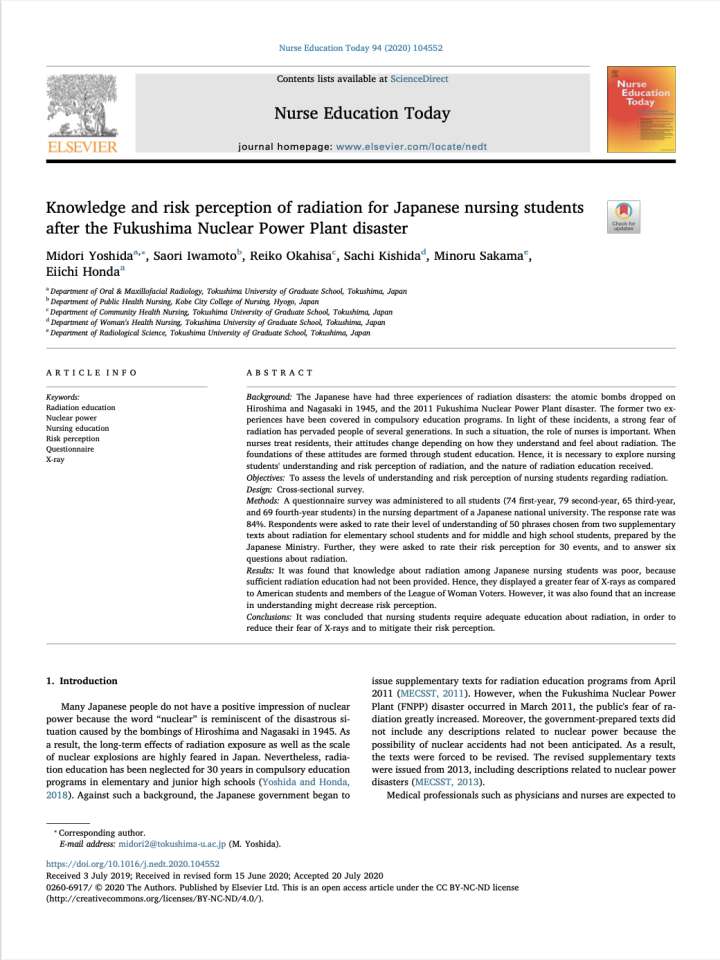Knowledge and risk perception of radiation for Japanese nursing students after the Fukushima Nuclear Power Plant disaster
This research explores nursing students' understanding and risk perception of radiation, and the nature of radiation education received. The Japanese have had three experiences of radiation disasters: the atomic bombs dropped on Hiroshima and Nagasaki in 1945, and the 2011 Fukushima Nuclear Power Plant disaster. The former two experiences have been covered in compulsory education programs. In light of these incidents, a strong fear of radiation has pervaded people of several generations. In such a situation, the role of nurses is important. When nurses treat residents, their attitudes change depending on how they understand and feel about radiation. The foundations of these attitudes are formed through student education.
The paper found that knowledge about radiation among Japanese nursing students was poor, because sufficient radiation education had not been provided. Hence, they displayed a greater fear of X-rays as compared to American students and members of the League of Woman Voters. However, it was also found that an increase in understanding might decrease risk perception. The study concludes that nursing students require adequate education about radiation, in order to reduce their fear of X-rays and to mitigate their risk perception.
Explore further
